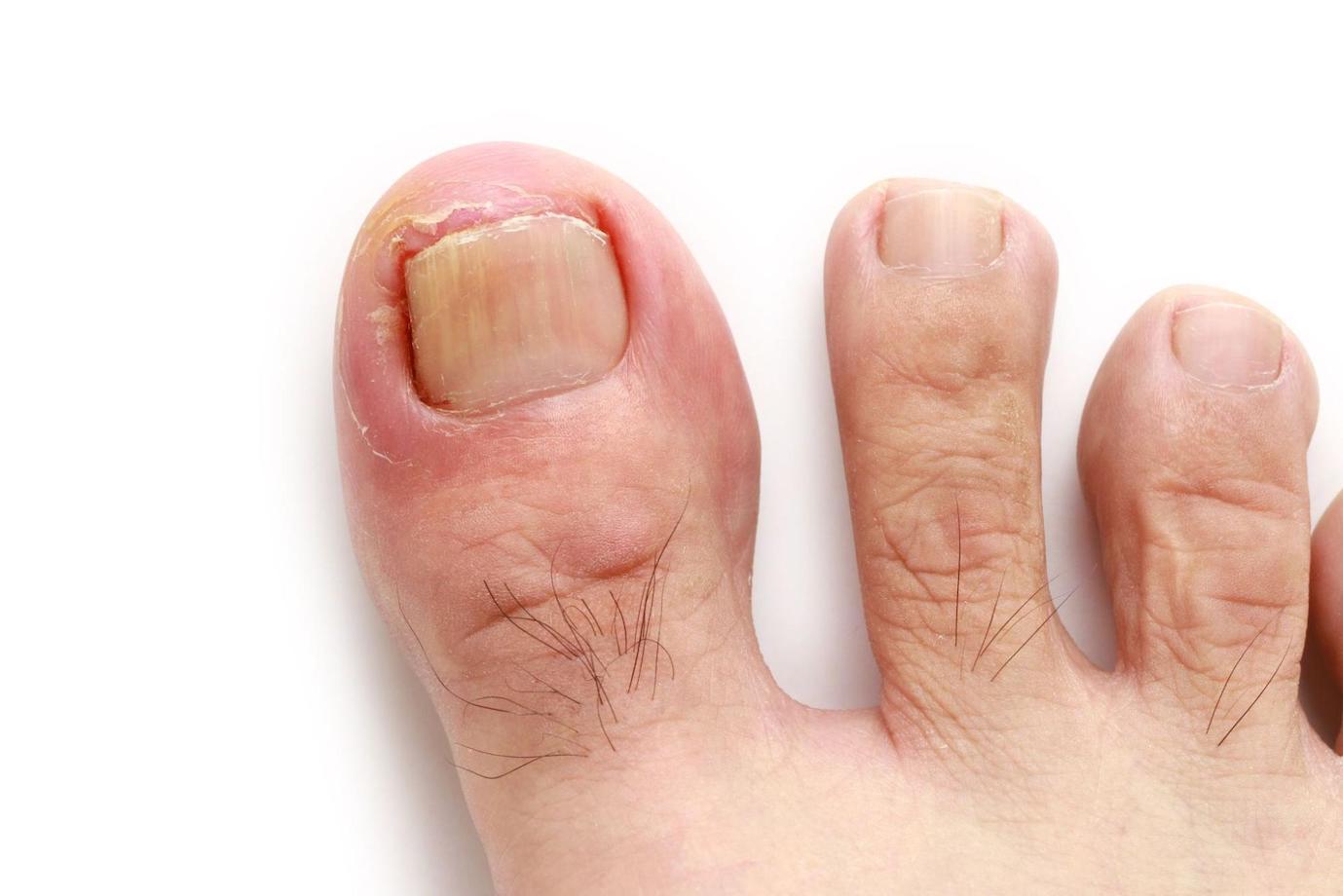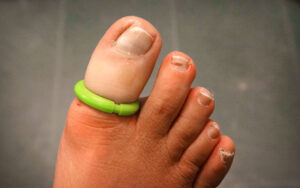Ingrown toenails are very common and are nothing to be ashamed of. For most cases, ingrown toenails can heal on their own and are self-treatable. However, for more serious cases – ingrown nail surgery may be considered. Your podiatrist or medical professional can remove ingrown toenails to ease the pain and reduce chances of infection. If you’re looking for a podiatry Melbourne service, Melbourne Foot Clinic is your first port of call. Our team of experienced podiatrists are well-versed in all things nail and skin care related. We offer professional ingrown nail surgery to our trusted patients.
What is an Ingrown Toenail?
An ingrown toenail occurs when your toenail grows into the flesh of your toe. Typically, this condition affects the big toe, causing pain, swelling, and redness.
Your podiatrist Melbourne can diagnose ingrown toenails and provide treatment options to ease your pain and make sure you get back to your ordinary life.
What Causes an Ingrown Toenail?
There are many causes for ingrown toenails to occur. The most common cause of ingrown toenails is by not cutting your toenails properly – either too short or not straight down the sides of your toenail. Other causes of ingrown toenails include:
- Wearing tight-fitting shoes or socks
- Injuring the toe
- Toenail naturally grows into a curve
- Picking at toenails
- Nail infections
- Sweaty feet
- Certain medical conditions
Most of the time, ingrown toenails can be successfully treated at home. However, if you are experiencing common ingrown toenails – ingrown nail surgery will definitely help. People who have diabetes or other existing conditions that affect the foot should consider seeing a foot doctor Melbourne if their ingrown toenails persist and cause significant discomfort or pain. Luckily, our podiatrists at Melbourne Foot Clinic are well-versed in all things nail and skin care related. Get in touch with us to book an appointment – let us help you get back to doing the things you love.
How to Prevent Ingrown Toenails
There are a few tips to help prevent ingrown toenails:
1. Wear properly-fitted shoes and socks. Shoes that have a wide toe box are ideal as they provide the foot space to breathe and toenails space to grow. Additionally, . Ensure that your socks aren’t compressing your toes either – the less pressure, the better. If you’re in need of properly-fitted shoes but are not sure where to start, visit your nearest podiatry Melbourne service for a consultation.
2. Trim your toenails straight across. Try not to curve your nails too much when cutting them, and avoid leaving sharp edges if possible. As the nail grows, it has the potential to grow into the tissue, causing pain.
3. Maintain your toenail length. Keeping your toenails at a moderate length is important – try to keep them even with the tips of your toes. Extremely short nails can cause the pressure from your shoes to dig into the toenail, directing it to grow into the tissue. Extremely long nails are uncomfortable, overgrown, and painful.
4. Consistently check your feet. Check your feet regularly for signs of ingrown toenails, pain, or symptoms of other foot problems. If symptoms or pain are persistent or worsening – please consult your hearest health care provider or foot doctor Melbourne for assistance.
Ingrown Nail Surgery
Your podiatrist may recommend ingrown nail surgery under these conditions:
- At-home remedies are unsuccessful at treating ingrown toenail
- Your ingrown toenails are regular and recurring
- You have existing health conditions which impacts blood flow or increases complications to your feet
The Procedure
Ingrown nail surgery is typically performed under local anaesthetic. The operation is relatively quick (about 10 minutes), and may involve one of more of the following nail surgery techniques:
- Nail avulsion – Removing your entire toenail.
- Partial nail avulsion – Removing a portion of the toenail.
- Wedge excision – Removing part of your toenail where it is growing into the skin, along with the area of tissue in the corner that your toenail grows from.
- Nail-bed ablation – Removing part of your toenail or your whole toenail and then applying a chemical or an electric current to the area of tissue that your toenail grows from.
- Zadek’s procedure – Removing your whole toenail and cutting away the area of tissue that your toenail grows from.
Ingrown Nail Surgery Recovery & Aftercare
Ingrown nail surgery aftercare is important in ensuring the toenail completely heals – preventing the chances of it re-occuring again in the future.
Rest your foot and limit foot-related activity for the first couple of days post-surgery. Try to keep it elevated when you’re sitting down. During the first few weeks after surgery, wear open-toed or loose-fitting shoes, which will give your toe plenty of space to heal. You will be able to return back to everyday normal life after a few days, but try to avoid strenuous activities such as running for about two weeks.
Your foot doctor Melbourne may provide you with follow-up instructions on how to keep your wound clean which will help to prevent infection. If you’re experiencing post-surgery pain or discomfort, resort to over-the-counter pain relief medication to ease the pain. If your toenail is infected post-surgery, your healthcare provider may prescribe antibiotics – take those as prescribed. If your pain persists or infection continues to spread, please consult your podiatrist Melbourne service near you.
Book Your Ingrown Nail Surgery With Melbourne Foot Clinic
At Melbourne Foot Clinic, our experienced and professional team of podiatrists can help ease your foot pain and discomfort. If you’re looking to undergo ingrown nail surgery but are unsure where to start, get in touch with the foot experts at Melbourne Foot Clinic. Alternatively, book your appointment today to get started. We’re here to help!


